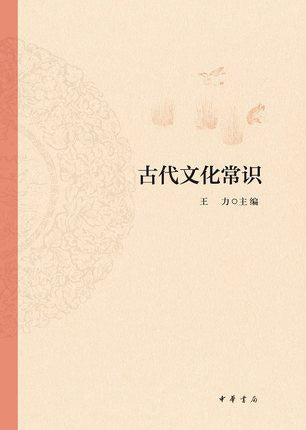WULOLIFE
《中国古代文化常识》王力主编中华书局版
《中国古代文化常识》王力主编中华书局版
Couldn't load pickup availability
Description
编辑推荐
你知道武王克商的繁复真相么?你知道我们所能见到的有关猫的最早实物么?你知道知名的司母戊鼎有一个假耳朵么?你知道孟姜女姓姜不姓孟么?你知道汉代穿深衣的人所穿的裤子是露屁股的开裆袴么?你知道最古老你知道最古老的酒瓶 出现在6000年前么?你知道猪肉的“腥”字本来是什么意思么?你知道中国近3500年来经历过何等让人匪夷所思的三次大规模变冷么?
◎经典必读本书是王力教授主持并召集众多专家共同编写的关于中国古代文化常识的简明读本,出版46年来前后历经4次重要修订,到今天仍然是大众认识中国古代文化面貌最重要、最全面的基础参考书。
◎集体创作书稿编写修订的时间总跨度有四十多年,倾注了三代编写者大量的心血,是集体创作的成果。
◎古史新证本次修订突破了以往的模式,特聘请在美国任教的汉学专家,以中国考古学黄金时代的成果为出发点,通过近世考古发现与传统文献相结合的“古史新证” ,从考新文化研究成果。
◎改谬补漏本次修订在增加新知的基础上,针对古代文献未能准确诠释的部分,援引大量考古发现重新做了精确的解释,纠正了大众乃至学界的错误认识,呈现给读者一幅更具趣味性、更准确的中国古代文化生活图景。
◎编排精心本书论述从创世神话到古代文明社会,内容精深,语言生动简练,精使读者更贴近古代文化生活,从而对中国古代文化产生浓厚的兴趣。需要特别指出的是,为方便读者阅读,专门为有兴趣的中学生扫清了字词和基本概念上的障碍。
内容简介
全书分天文、历法、乐律、地理、职官、科举、姓名、礼俗、宗法、宫室、车马、饮食、衣饰、什物等十四个部分,扼要介绍了先秦文献中的天文历法;概述了中国历代疆域的划分;细缕古代政治结构以及人才选拔;对中国已经消失的宗法制度尤其是昭穆制度进行了细致分析;从宏观与微观层面对国古代名物制度以及政治体制制度作了系统性概述。涉及内容既包括平民百姓的生活,也包括上层社会的奢华。本书援引大量考古发现,纠正了一些大众乃至学界的错误认识,呈现给读者一幅更具趣味性、更准确的中国古代文化生活图景。
作者简介
教育中国现代语言学的奠基人之一,曾任北京大学教授、中国科学院哲学社会科学部委员。1926年考入清华大学国学研究院,师从梁启超、王国维、陈寅恪等。1927年赴法国留学,获巴黎大学文学博士学位。他的研究涉及语法学、词汇学、音韵学、语言学史等领域,在国内外产生了深远影响。著有《诗词格律》《中国语文概论》(又名《语文讲话》)《古代汉语常识》《中国音韵学》《古代汉语》《中国语法纲要》《中国现代语法》《同源字典》《汉语史稿》《龙虫并雕斋琐语》等四十余部。
